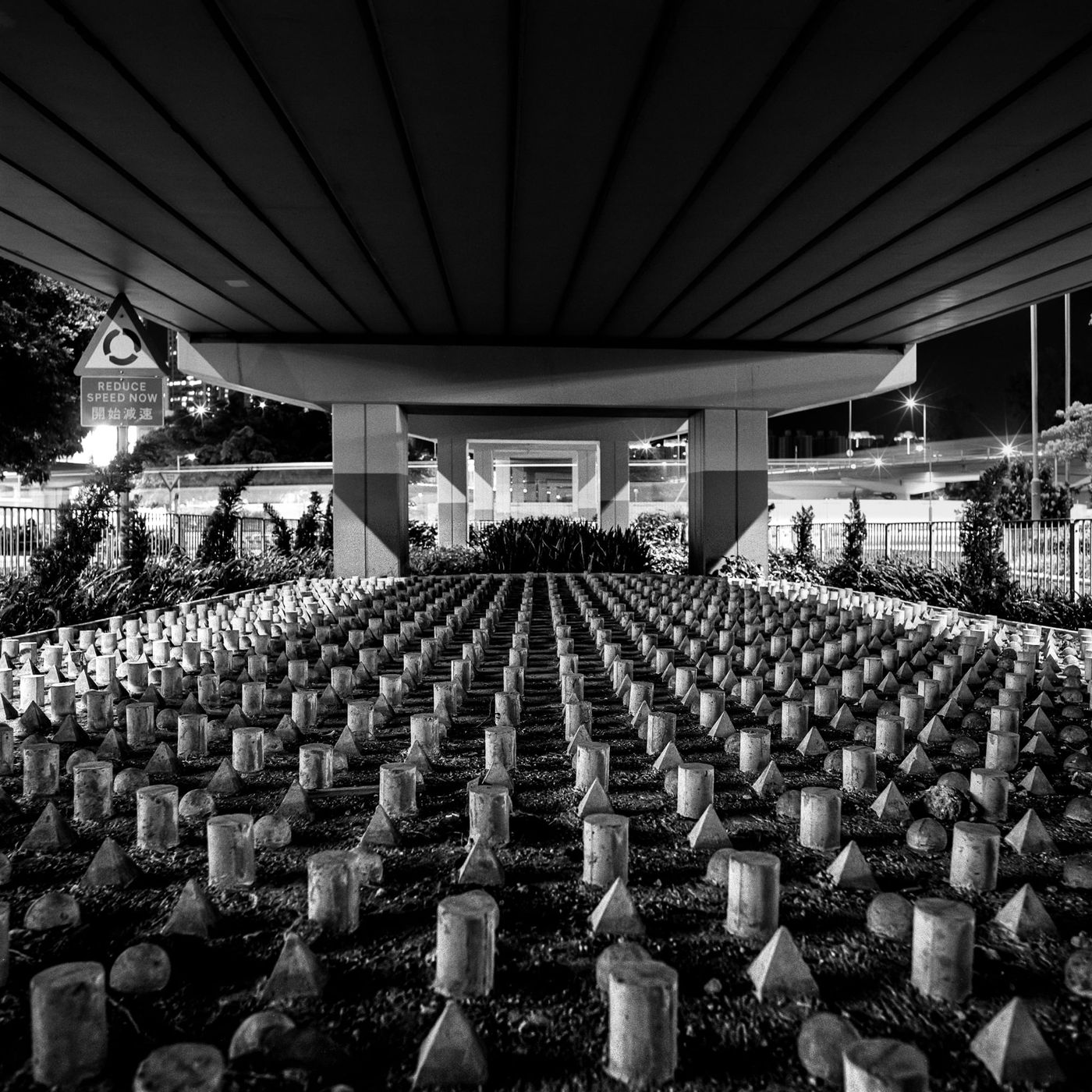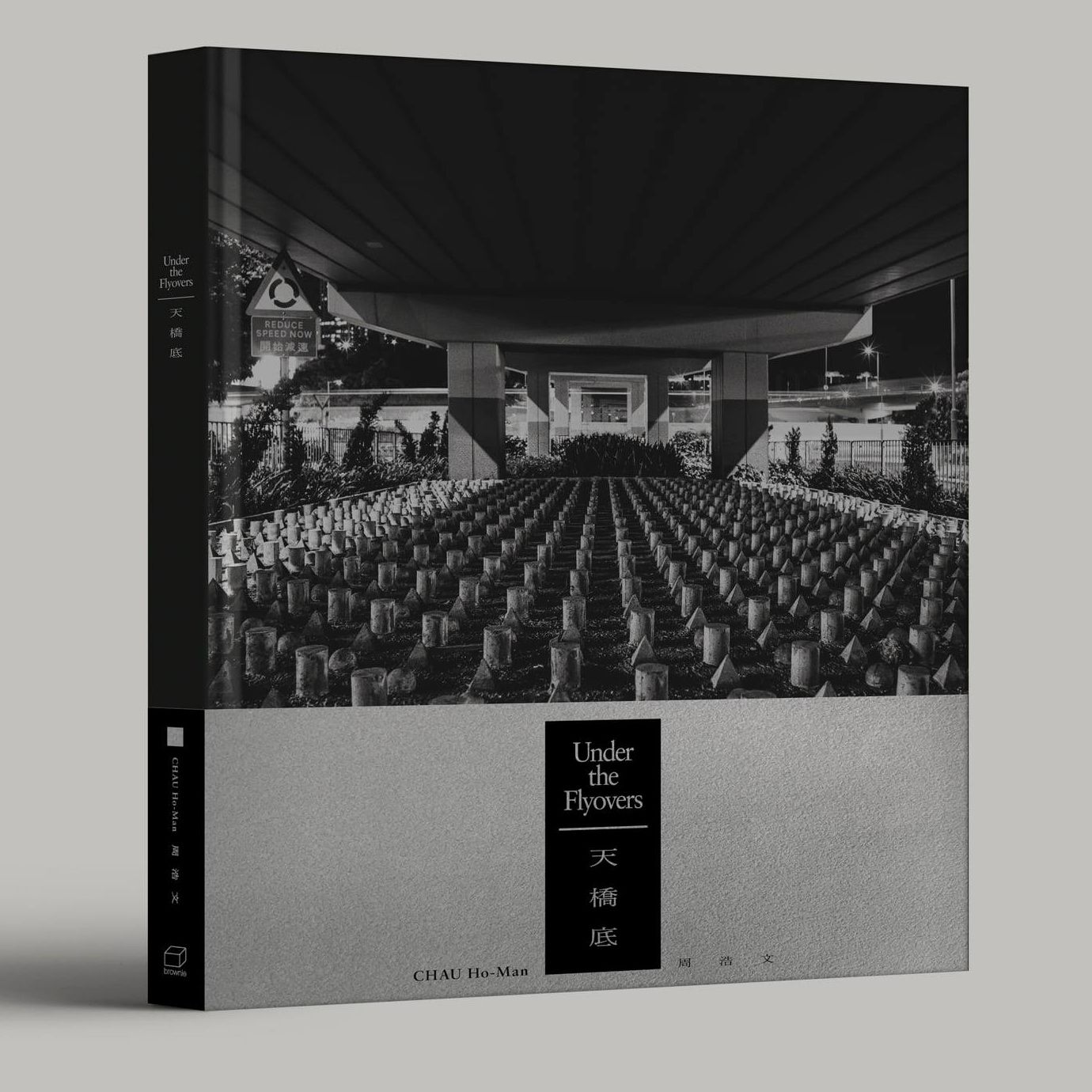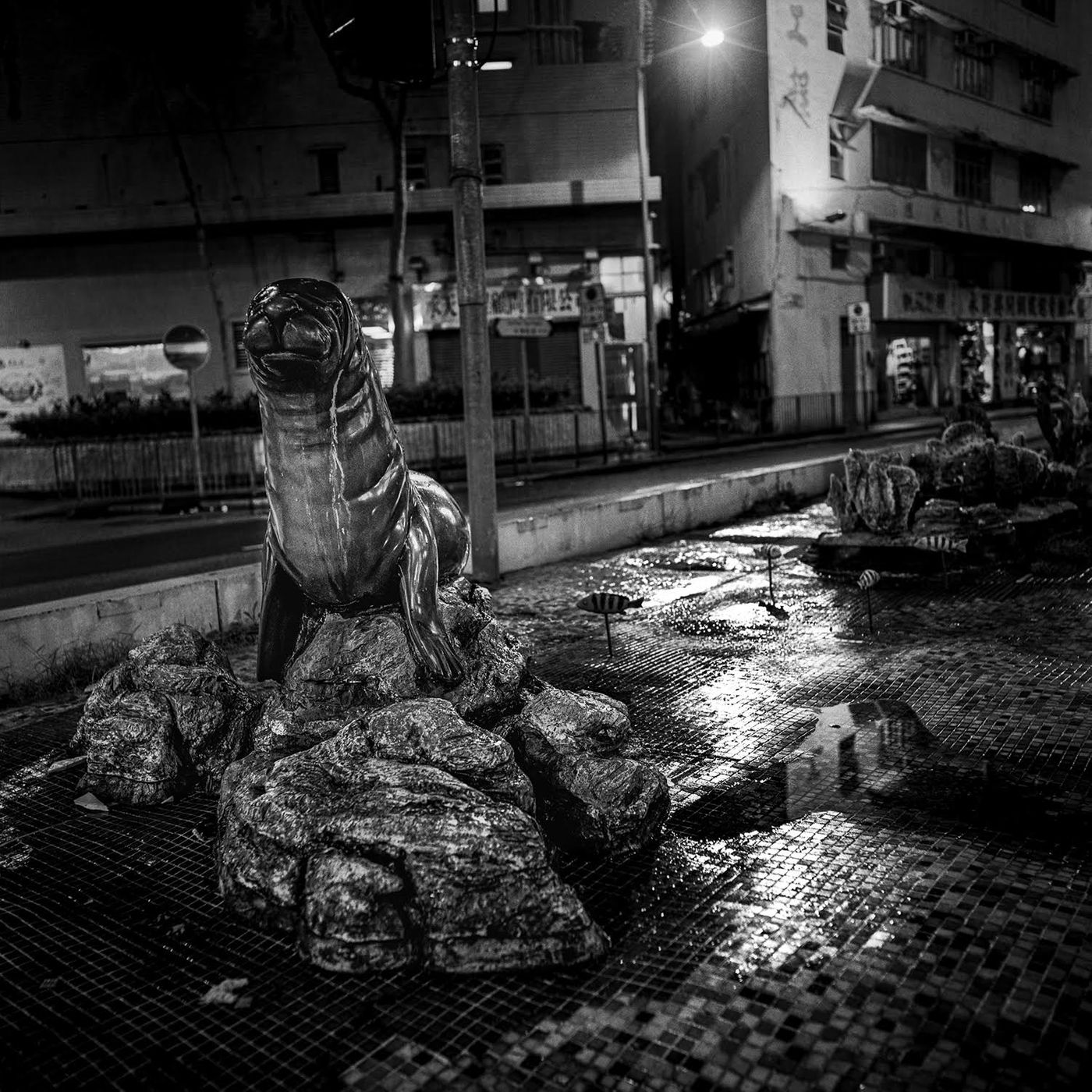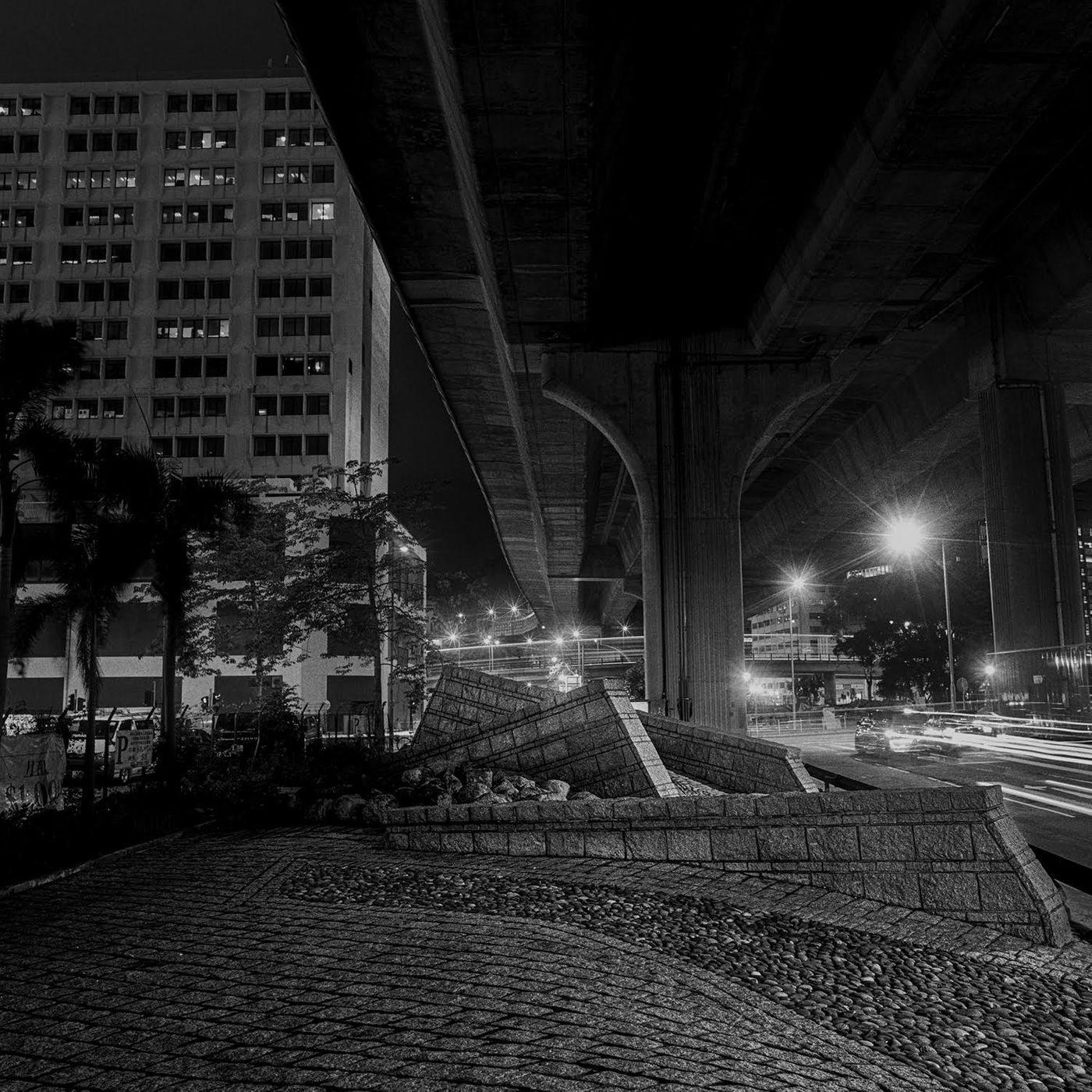Hong Kong's "Hostile Design" - the space under the absurd flyover with conical stone circles and large boulders

Hong Kong is densely populated with overpasses, with 943 pedestrian overpasses and 1,369 vehicle overpasses and bridges. In terms of population density, it is probably among the best in the world. The appearance of the overpass is beneficial to traffic and pedestrians, reducing traffic congestion, but also a by-product of the public facility under the overpass. Its existence is like an ambiguity, and no one knows its real purpose. The planners ignored the idea of this kind of space. People walking on the overpass rarely imagine the scenery under the overpass. As a matter of fact, in Hong Kong, where there is little land and many people, and there is a huge disparity between the rich and the poor, even the neglected space under the flyover was originally a precious resource for many people, and has gradually become a safe place for street sleepers.
In the past, because the government ignored the existence of this kind of space, the homeless under the flyover had been living in peace until the space under the flyover was discovered more than ten years ago, and they began to "rectify". Some overpasses were surrounded by barbed wire to prevent anyone from entering the public space. Later, it gradually evolved into a "hostile design", in which egg-shaped stones or sharp-edged structures were built neatly and orderly at the bottom of the overpasses. Cement bricks, even stacked stone formations and large boulders, create a bizarre and useless "landscape" that seems out of place and so surreal that urban researcher Huang Yuxuan calls it a "monument of malice."

With such "good intentions", the purpose is to prevent people from using this space, or more precisely, to drive away the homeless sleeping under the flyover. The public space in our common sense should be based on the premise of benefiting the people. A rational government, seeing so many people displaced, should reflect on social welfare policies and drive out the street sleepers who live there. The problem of poverty will not disappear. , it does not mean that these people do not need to sleep in the open, it will only make them go to more remote and secluded places. Photographer Zhou Haowen captured the scene at the bottom of the overpass. This series of photos can be described as a silent indictment, and to a certain extent, it is also a questioning of urban space planning.
The incident happened in 2013, when Zhou Haowen found a pile of stones at the bottom of the stairs of the Mong Kok flyover, and many similar images flashed in his mind when he was in it. "There is a public space between the visible and the invisible under the flyover that I pass by every day. Even if I have seen a lot of similar situations since I was a child, I always forget it soon after reading it." Many photographers in Hong Kong pay attention to the rough sleeping under the flyover. However, very few people took pictures of the space under the flyover, so Zhou Haowen took a Hasselblad camera to shoot in these neglected spaces in Hong Kong, Kowloon and the New Territories, and a month ago, he compiled the photos taken over the years into "Under the Flyover" This book.

In the photo album, Zhou Haowen divides the content under the flyover into several chapters. The first part is the overall environment of the space under the flyover, such as the stone formation at the three-pointed octagon under the flyover on Harcourt Road in Central, the egg-shaped stone at the bottom of the flyover at Ferry Street in Yau Ma Tei, The columns and quadrangular-shaped cement bricks under the flyover of the World Games Garden in Kowloon City, and the cone-shaped stones also made Zhou Haowen worried when he was shooting. The bottom of the overpass is the filming location of the movie "Drifting on Turbid Water". The uneven ground and the sloping low stone wall, people who don't know it may think it is installation art, these buildings are inconvenient for people and the design of the space is inhuman. , also apparently to drive away the homeless. "The most bizarre thing is that the bottom of the Kwun Tong Road flyover is a busy road. Usually no one sleeps in the rough, and there are many large rocks, which makes me puzzled."
The second part of the photo album focuses on the traces of people's use of the space under the overpass and the comparison of the changes before and after. There are graffiti on the bridge piers, mattresses and chairs under the overpass, and abandoned bear dolls, etc. It can be seen that many people used to be in these places. 's shelter. In addition to the above-mentioned nonsensical boulders and stacked stone formations, the most incredible are the bizarre animal sculptures, pandas and dolphins under the flyover at Princess Ho Man Tin Road, and under the flyover near Tai Kok Tsui Harbour Court. Sculptures of marine animals such as seahorses and sea lions are also puzzling. There are also space designs such as football fields, playgrounds and imitation gardens, but it is reported that the utilization rate is not high, and whether it is good or bad is a matter of opinion.

In the last chapter of the photo album, I photographed the bottom of an empty overpass, and some put a bench. Compared with those so-called stone circles and sculptures, this simple facility or inaction is much more pleasing to the eye. . The photographer's lens also recorded the other side under the flyover, such as the Tung Hei Road Pet Park in Shau Kei Wan and the remote control car park at Ferry Street, which indeed provides convenience for the public in need. "There are many ways to solve the problem. In addition to better planning, inaction (deliberately adding stones) may also be a solution."
Zhou Haowen shot with a Hasselblad camera. The camera's waist-level framing makes the photo more centered and more objective. However, the more beautiful the picture and the more neatly composed the photo, the more prominent the absurdity of the whole thing. How illogical the space design is. The framing at night also adds a stage light effect to the photo, and the deserted picture with no one in the wild gives the photo a surreal feeling. The printing of "Under the Overpass" is also unique. The photos are printed on thick black paper with silver ink. Although it is expensive, this silver color highlights the exaggeration and absurdity of the space under the overpass. The editor of the photo album, Zhong Zhuoling Described that silver represents that gorgeous but meaningless state of exploiting other people's living space, which indeed sublimates the meaning behind the photo.

Hong Kong is densely packed with 943 flyovers. The footbridges are undoubtedly conducive to pedestrian traffic, and it also creates public spaces under the flyover. In densely populated Hong Kong with Economic Inequality, even such neglected area under the overpass has gradually become a settlement for the homeless.
When the government discovered such kind of space, they began to "rectify" it. Some were fenced with barbed wire to prevent anyone from entering the public space. Later it evolved into a "hostile design," egg-shaped stones or sharp corners cement bricks were built neatly and orderly under the flyovers. The stacked bricks arrays and large rocks create a weird "landscape" incompatible with the surrounding. HK Urbanist Sampson Wong described it as a "monument that reflects ill intentions."
The malicious design aims to prevent people from using this space and drive away from the homeless sleeping under the footbridge. However, the homeless's problem will not disappear, and It would only force them to more remote and hidden places. Photographer Chau Ho-Man captures the absurd scenes under the overpass. To a certain extent, it can be viewed as a silent accusation and questioning of urban planning to the government.
·Development IG (bilingual content): https://www.instagram.com/photogstory/
Like my work? Don't forget to support and clap, let me know that you are with me on the road of creation. Keep this enthusiasm together!





- Author
- More